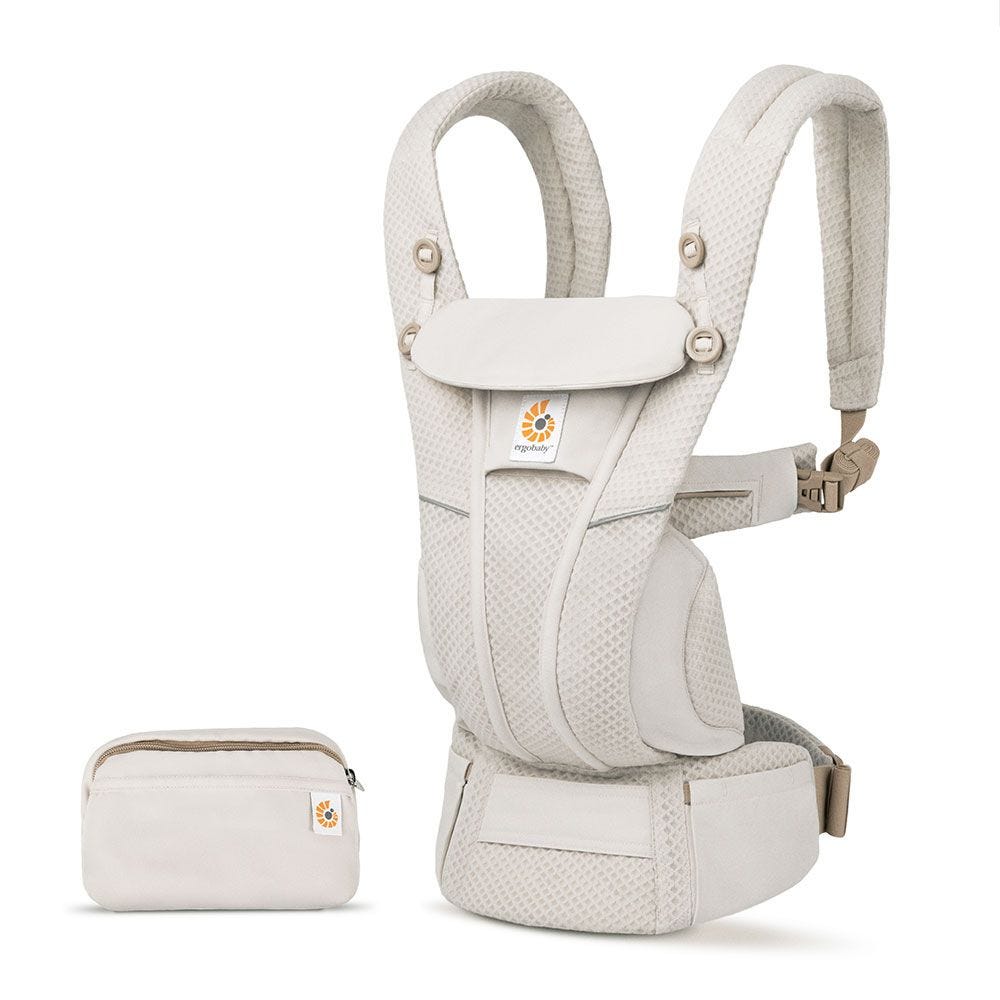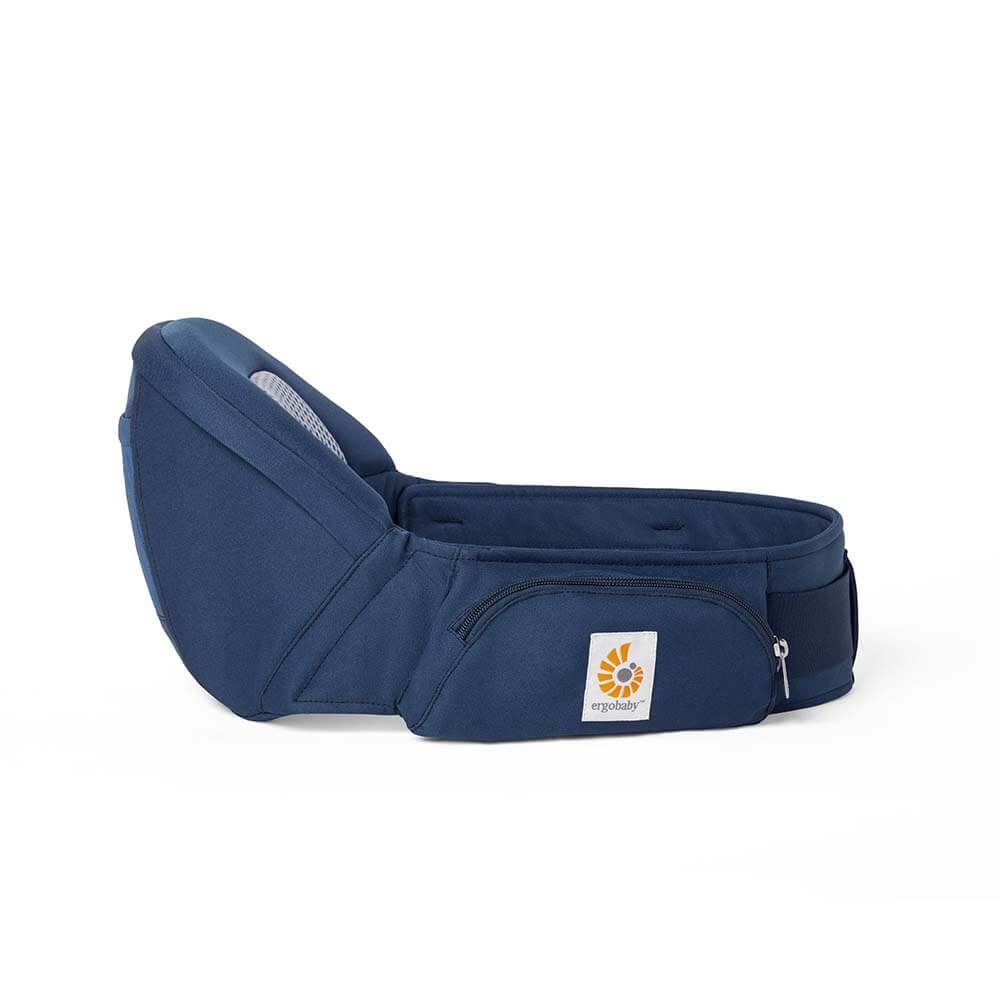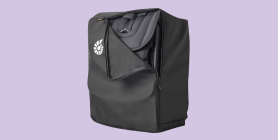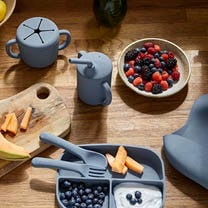Ergobaby
“When can baby sleep in their own room” is a question baby and child sleep specialist Gemma Coe hears often. Today she’s sharing her expertise on moving your little love into their own room.
Some parents are eager to have their room back to themselves and others not so much! It’s a big step – for you and for them – and while it might feel like a practical change, it also raises important questions about sleep safety, emotional readiness, and what’s actually right for your family. So here’s what you need to know…
What the safe sleep guidance says about when baby can sleep in their own room
The Lullaby Trust and NHS recommend that babies sleep in the same room as their parents for at least the first six months. This is based on evidence that room-sharing reduces the risk of Sudden Infant Death Syndrome (SIDS). Some families choose to room-share for longer, which is also completely fine – it’s about balancing safety, sleep quality, and emotional readiness.
There’s no strict cut-off, but from
Would you like to win an unbeatable Easter gift worth 1000€ ? Find all six products Eddie the Easter Bunny is hiding with on our website for your chance to win!
Let's go on an Easter Bunny Hunt
And what's the prize?
Our winner's Easter prize is an amazing bunny-dle of ergonomic baby essentials worth over 1000€ !
It contains:
x1 Metro 3 Stroller
x1 Embrace Newborn Carrier
x1 Omni Deluxe Baby Carrier
x1 Lift Hip Seat
x1 Evolve 3-in-1 Bouncer
x1 Portable Changing Pad
And to make it even better? The winner can choose their preferred colour and style (subject to availability)!


How does it work?
- Hop on over to our website whenever you have a free moment (it's the perfect activity for when you're nap-trapped!)
- Scroll through our products and look for where Eddie the Easter Bunny is hiding
- Make a note of the six products where you found the Eddie
- Submit your answers via our form for your chance to win an ergonomic essentials bundle worth over 1000 € !
- And don't forget when browsing our website,
What an exciting milestone in baby's development: crawling! At last they can expand their range of movement more quickly and independently. Crawling is baby's first important step towards independence. But when is it time? When do babies start crawling? And how can you as parents and carers encourage crawling? In today's blog article, we want to give you everything you need to know about the big milestone of crawling. What can you expect in the different phases? What different crawling styles are there? How can you support your baby? And when do you need to see your GP if it’s not happening?
Independence, here I come! When do babies start crawling?
On average, most babies can crawl at around nine months old. However, like with everything, every baby crawls at their own pace. Some children are ready at six months, while others may not start until nearer their first birthday. You can recognise from these early signs that your baby is starting to learn to crawl:
- Getting stronger during
There are so many wonderful benefits of babywearing. From supporting baby’s natural posture to reducing infant crying to strengthening the bond between baby and their caregivers and more, using a baby carrier is a win-win for you and your baby - emotionally, cognitively and physically.
But if you’ve never used a baby carrier, everything is new and unknown. So, you might be asking yourself things like what kind of ergonomic baby carrier should you use? When can you start using a baby carrier? Is a baby carrier safe for newborns? What about baby carrier safety and hip dysplasia?
Here are the basic things you need to know about using a baby carrier.
1. You can start using a baby carrier from day one.
So, let’s start with the question: is a baby carrier safe for newborns? Yes, if it offers the correct ergonomic support. With the right carrier or wrap you can even take it with you to the hospital and use it the day your baby is born. Using it in the early days and weeks is a great way to bond
Parents’ everyday routines are busy and at times chaotic. And while children are wonderful, they can also make everyday errands into an epic event. Need to run to the store just for milk and toothpaste? Alone, you can be there and back home in 10 minutes. But with a baby, you never know how long it’ll take. You have to pack a nappy bag, put your child and their stuff in the car/stroller/carrier etc. - there’s 25 minutes right there (not including any surprise setbacks like a nappy explosion just as you’re ready to go) and you haven’t even made it into the shop. It can make any sane parent feel overwhelmed.
But life requires leaving the house some days. You have places to go and people to see; not to mention your sanity to keep. Want to know what can help you keep your sanity? A lightweight compact stroller. It can’t pack a nappy bag or put your child into their car seat, but it does add some convenience to your everyday routine.
What are the benefits of lightweight compact strollers?
It’s a parenting right of passage, learning how to change a newborn nappy, but when you stand at the changing table for the first time and see this delicate creature lying in front of you, you may suddenly have doubts. It’ll become second nature soon enough, after all you’re going to have plenty of practice (8-12 times a day at the beginning!). And to help you feel even more confident, we've got a few helpful tips on how to ergonomically handle your baby while changing them, that will make it more comfortable for them and you.
What do you need to change your baby properly?
While this might not seem like rocket science, no one wants to find themselves in the middle of the changing process only to realise something is missing. Walking around with your half-naked baby in your arms is asking for trouble. So, having a checklist makes sure you’ve got what you need…
1. A safe space to change baby: Your changing table or changing station should be in a quiet and warm place. Always secure your
Do you have a little love who is incredibly curious and tries to see, understand and soak up as much of the world around them as possible? Do they constantly turn their head to the side when they’re in your baby carrier because there is so much to discover? If this is the case then they may be getting ready to face forward/outward (they mean the same thing)
. You can try it in any carrier that ergonomically supports this position, for example our Omni Deluxe baby carrier, and provided that your little one is ready.
How do you know if they are ready? They need to have reached the right size and stage of development, which usually happens around five - six months old. You can find out what else you need to know if you want to use an forward facing baby carrier in today's blog.
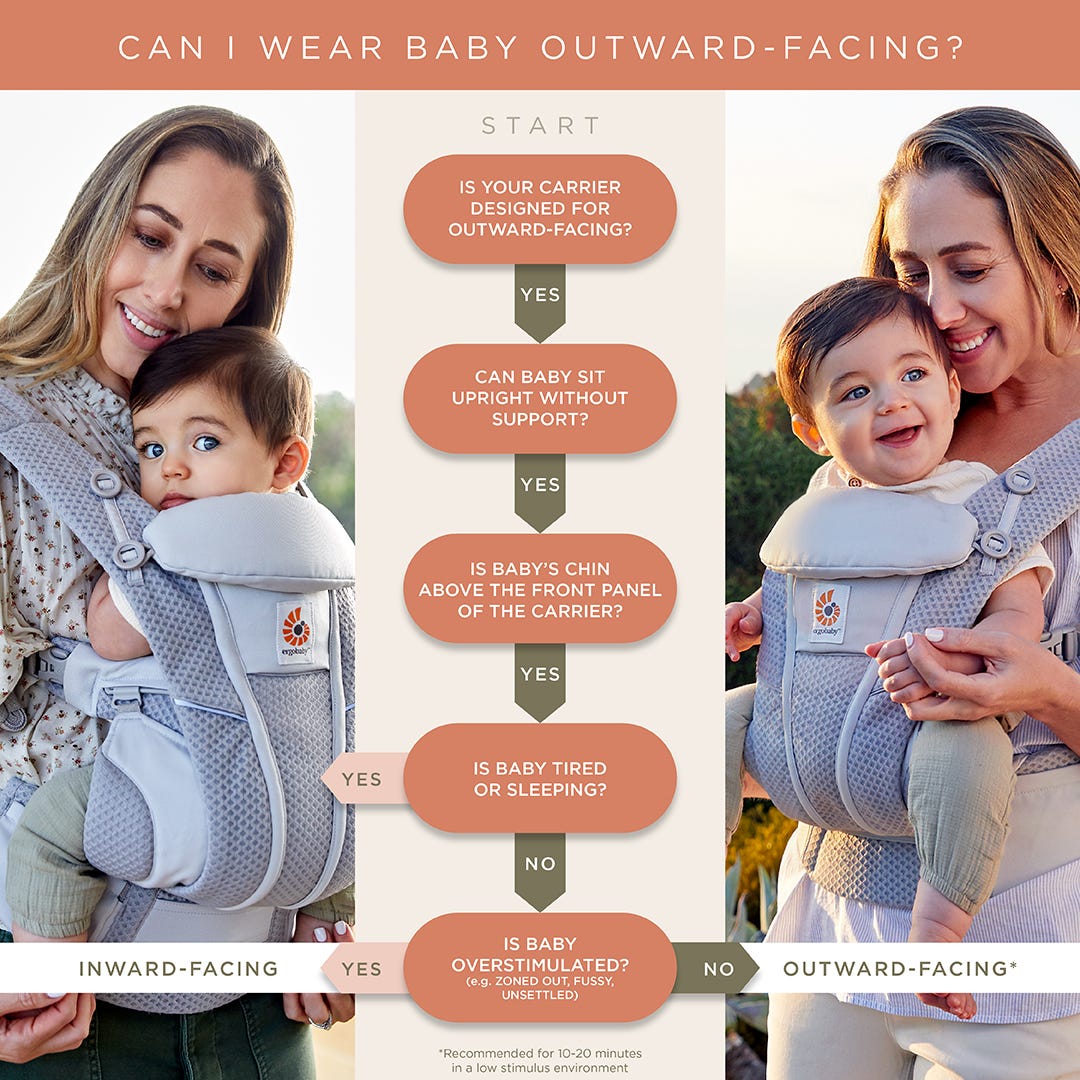

When to carry your baby forward facing: the right time
Carrying your baby forward or outward facing is something you likely will do intuitively even without a baby carrier. As soon as your baby is around five-six
It’s official! A 100% recommendation rate, high ratings in key areas, and the ergonomic accolade from Aktion gesunder Rücken e.V. (AGR) campaign for healthier backs! The verdict is clear: our Ergobaby Alta hip carrier and Lift hip carrier are both loved by babywearing consultants, parents, their children and by us, of course. They are also the only baby hip carriers on the market designated “back friendly” by the experts at the AGR. But what else makes our hip seats so special and why are Lift and Alta recommended as baby hip seats by so many different experts?
The advantages of the Alta hip carrier and Lift hip carrier
If you have an active baby or toddler you will be familiar with being asked to pick them up then put them down then pick them up and so on and so on. The result: back pain, tired arms or other postural problems. If you keep lifting your little one up and sit them on your hip (without a designated hip seat), this takes its toll on your body: your spine is no longer in
There comes a time when your little love starts to feel heavy being carried on your front, even with the most ergonomic baby carrier around! And it can get tricky to see around them or bend down with them on your front. But you love exploring the world with them and you don’t want that to end. The good news is that it doesn’t have to. Because you can carry your baby on your back. And for quite a while yet. And we’ve got a whole bunch of reasons why we think you’ll both love an Ergobaby back carry, and exactly how to do it in a baby carrier like our Omni Deluxe. Because the end of babywearing is only in sight when the weight limit of your baby carrier is reached (20.4 kg for the Omni Deluxe) or when either of you no longer want to do it.
Requirements for carrying your baby on your back
To be able to carry your baby safely on your back, they should be able to:
- demonstrate strong head and neck control
- sit unassisted
- weigh 17.2 lbs/7.8 kg
All babies are different but most will reach these
Who is ready for some sun? We certainly are! So if you’re busy planning your first trip with baby or your next holiday with kids, then you’re probably thinking about what you need to take with you and what you need to buy before then? If that’s you then this blog article is exactly what you need! Because today we're giving you ten reasons why a travel stroller is an absolute must-have when you’re travelling with a baby and why the new Ergobaby Metro 3 is the very best choice.
The basis for a relaxed holiday with baby: the travel stroller
Do you want to be prepared for anything a holiday with kids can throw at you? Then a travel stroller is really worth its weight in gold. Of course, a baby carrier is a must have and, small as it is, there’s probably plenty of room for it in your luggage. It can be more of a debate though as to whether a travel stroller is worth bringing. But the new Ergobaby Metro 3 makes that an easy choice as it’s guaranteed to make your life easier. Here are 10 reasons

